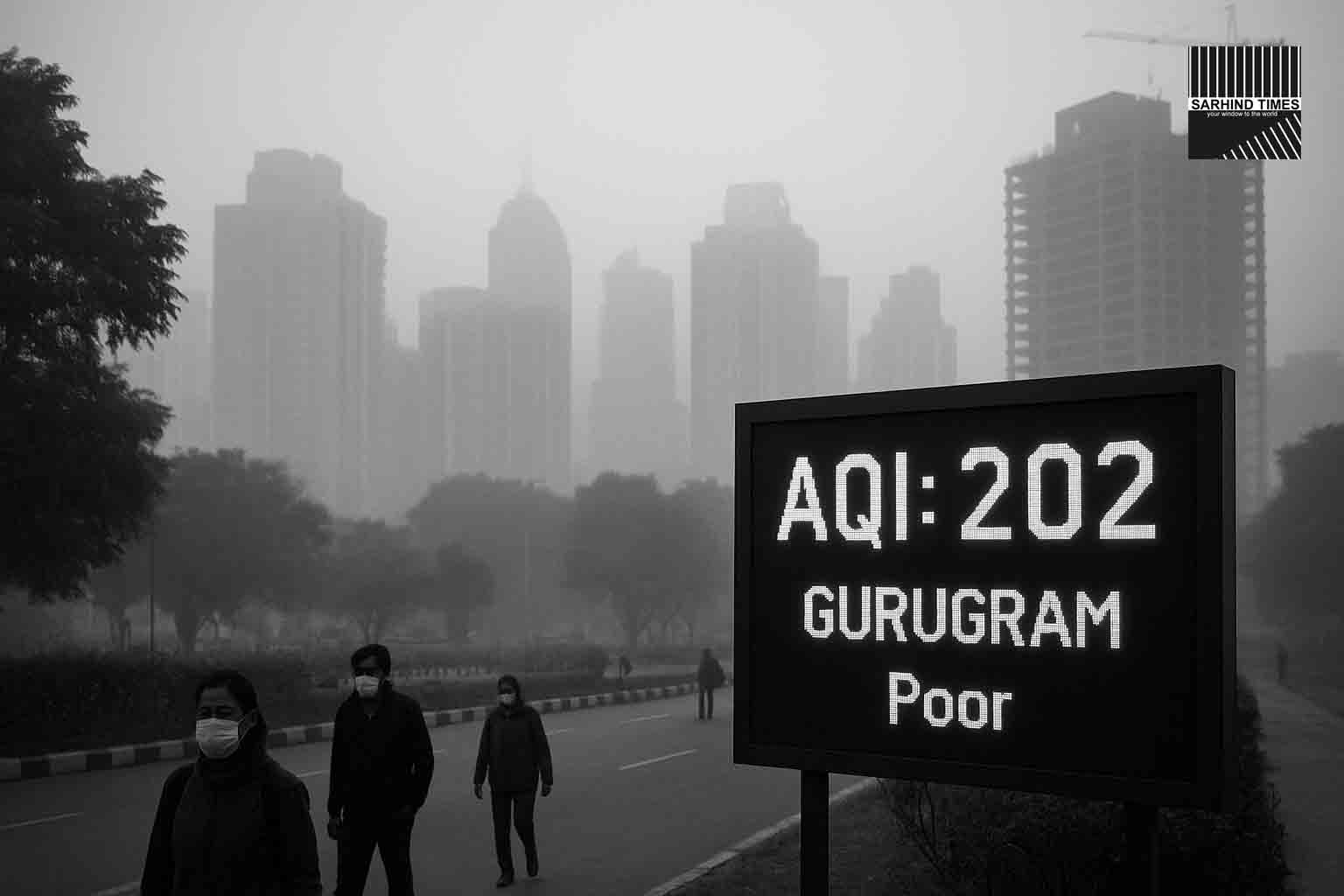20 sep 2025
Every winter, as the mercury drops and winds still, Gurugram—one of India’s most dynamic urban hubs—finds itself engulfed in a thick haze. Dust, vehicular exhaust, industrial emissions, and crop-residue burning from neighboring states combine into a lethal cocktail that chokes residents, closes schools, and fills hospital wards with respiratory patients.
This year, the authorities are taking a proactive step. Gurugram will soon add five new real-time air quality monitors to its existing network. The expansion, officials say, is intended to sharpen pollution tracking during the high-smog season and ensure timely interventions.
With this move, the city is not only investing in technology but also signaling a shift toward data-driven governance in environmental management.
Why Real-Time Monitoring Matters
Air pollution is not static. It fluctuates hour to hour depending on traffic, industrial activity, wind direction, and temperature. Traditional monitoring, which often relied on manual readings and daily averages, failed to capture these spikes.
Real-time AQI monitors provide:
- Hyperlocal visibility – Residents can check pollution levels neighborhood by neighborhood.
- Early warning – Schools and hospitals can plan advisories when spikes are detected.
- Policy triggers – Authorities can implement Graded Response Action Plans (GRAP) more precisely.
- Citizen empowerment – People can choose when to venture outdoors, wear masks, or use air purifiers.
Where the Monitors Will Be Installed
Officials have not released the full list of new sites, but likely candidates include:
- High-traffic corridors such as NH-48, MG Road, and Sohna Road.
- Construction-heavy zones near new residential and commercial hubs.
- Industrial clusters in Udyog Vihar and Manesar.
- Residential neighborhoods where public concern is high.
Together, these placements will cover a diverse cross-section of the city’s pollution hotspots.
Voices from the Ground
- Environmental campaigners welcomed the step but warned it was only a “diagnostic tool,” not a cure.
- Public health experts emphasized that finer spatial data can help clinicians warn asthma and COPD patients to limit exposure.
- Parents’ groups said real-time updates should feed directly into school decision-making, especially on outdoor activities.
One parent remarked:
“Last year, my daughter’s school closed suddenly when AQI spiked above 400. If we had real-time data, decisions could be made earlier, with less chaos.”
Beyond Monitoring: Addressing Sources
While data is critical, activists argue that real solutions require addressing pollution sources:
- Construction Dust – More mechanized sweeping and strict rules on covering sites.
- Diesel Generators – Incentives for solar and backup battery solutions.
- Traffic Congestion – Expanding public transport, carpooling, and electric buses.
- Industrial Emissions – Stricter compliance checks, especially in older factories.
Without source control, monitoring risks becoming “measurement without management.”
Public Health Perspective
Doctors in Gurugram report a 30–40% surge in respiratory cases every winter. Long-term exposure to high PM2.5 levels is linked to:
- Asthma attacks and COPD exacerbations.
- Cardiovascular diseases.
- Lowered immunity, especially in children and elderly populations.
By adding monitors, authorities hope to generate actionable alerts, like shifting school schedules, advising work-from-home, or issuing traffic diversions during peak smog episodes.
Quarterly Audits and Credibility
A major criticism of existing air quality networks is equipment downtime or questionable calibration. Gurugram officials have pledged quarterly audits of the new monitors to ensure:
- Consistent uptime (above 90%).
- Calibration against central standards.
- Public access to raw data, not just summary AQI scores.
This emphasis on transparency could restore citizen trust in official air-quality reporting.
Global Context
Cities worldwide—from Beijing to Los Angeles—have relied on dense monitoring networks to fight pollution. The key lessons:
- Transparency encourages citizen participation.
- Linkage with policy triggers ensures timely response.
- Integration with technology (apps, dashboards) makes data useful in daily life.
Gurugram’s move reflects these global best practices, though execution will be the true test.
Technology & Innovation
The new AQI monitors are expected to use sensors capable of measuring:
- Particulate Matter (PM2.5 and PM10)
- Nitrogen Dioxide (NO2)
- Sulfur Dioxide (SO2)
- Ozone (O3)
- Carbon Monoxide (CO)
Advanced systems can transmit readings to public dashboards in real time, and some may even feed into predictive AI models that forecast smog episodes days in advance.
Citizens as Partners
Officials stress that data will not just be for government use—it will be open for citizen engagement. NGOs and schools can integrate AQI feeds into awareness programs. Private apps can alert users when air quality dips. Residents can plan outdoor exercise or school sports accordingly.
Looking Ahead
The five monitors are just the beginning. Long-term plans may include:
- Expanding the network to rural belts, capturing pollution transport patterns.
- Integrating with NCR-wide data systems, ensuring uniform action.
- Pairing monitors with enforcement units, so dust and smoke violations are flagged instantly.
If implemented well, Gurugram could emerge as a model for smart air-quality management in India.
Conclusion
By expanding its air-quality monitoring network, Gurugram is taking an important step toward protecting citizens from the annual scourge of winter smog. While the monitors will not solve the pollution crisis alone, they will make the problem more visible, actionable, and accountable.
As one environmentalist put it:
“What you can’t measure, you can’t manage. These monitors are a first step. The second must be bold action.”
For residents weary of waking up to grey skies and itchy throats, that action cannot come soon enough.
#Gurugram #AirQuality #Environment #PublicHealth #AQI #WinterSmog #Pollution #SarhindTimes






















+ There are no comments
Add yours